Themed collection Solar energy

Upconverter solar cells: materials and applications
Photon upconversion of sunlight for solar cells is reviewed and the possibilities to increase the efficiencies of the upconverter materials are discussed.
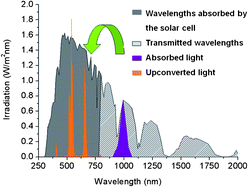
Energy Environ. Sci., 2011,4, 4835-4848
https://doi.org/10.1039/C1EE01659H
Organic solar cells: A new look at traditional models
This Perspective discusses areas where organic solar cell behavior diverges from traditional models, including geminate pair recombination illustrated here.
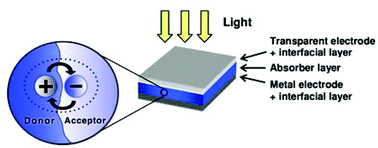
Energy Environ. Sci., 2011,4, 4410-4422
https://doi.org/10.1039/C1EE01663F
Biomimetic strategies for solar energy conversion: a technical perspective
This article reviews recent advancements in biomimetic pathways for solar energy conversion, with a focus on water-splitting catalysis and photoelectrochemical cells.

Energy Environ. Sci., 2011,4, 3834-3843
https://doi.org/10.1039/C1EE01363G
Stretchable, elastic materials and devices for solar energy conversion
This Perspective reviews recent progress in stretchable, elastic materials and devices for the utilization of solar energy for off-grid applications.
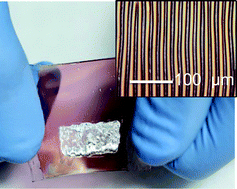
Energy Environ. Sci., 2011,4, 3314-3328
https://doi.org/10.1039/C1EE01881G
Artificial photosynthetic systems. Using light and water to provide electrons and protons for the synthesis of a fuel
This review presents the current advances in light-driven water oxidation catalysts in the field of artificial photosynthesis.
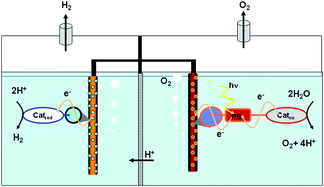
Energy Environ. Sci., 2011,4, 2353-2365
https://doi.org/10.1039/C0EE00645A
Dye -sensitized solar cell redox shuttles
The role of redox shuttles in dye-sensitized solar cells, DSSCs, is presented, with an emphasis on how the shuttle's properties affect photovoltaic performance, in addition to a critical literature review on attempts to use outersphere redox shuttles to replace the ubiquitous triiodide/iodide shuttle.
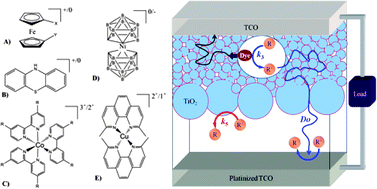
Energy Environ. Sci., 2011,4, 370-381
https://doi.org/10.1039/C0EE00251H
Tandem polymer photovoltaic cells—current status, challenges and future outlook
In this article we discuss the challenges in fabrication, design and characterization of polymer tandem cells and approaches taken to overcome these challenges.
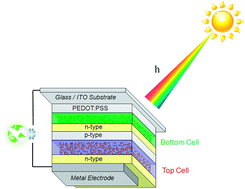
Energy Environ. Sci., 2011,4, 1606-1620
https://doi.org/10.1039/C0EE00754D
Graphene based new energy materials
This review summarizes recent advances in the synthesis and applications of graphene based materials for energy storage and conversion.
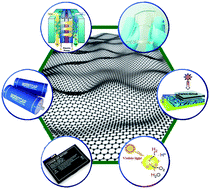
Energy Environ. Sci., 2011,4, 1113-1132
https://doi.org/10.1039/C0EE00683A
Interface design to improve stability of polymer solar cells for potential space applications
Transient-photovoltage measurements reveal the science behind achieving more radiation-hard polymer solar cells for space applications.
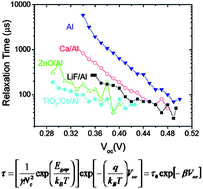
Energy Environ. Sci., 2011,4, 4917-4920
https://doi.org/10.1039/C1EE01368H
Non-covalent doping of graphitic carbon nitride polymer with graphene : controlled electronic structure and enhanced optoelectronic conversion
Fused hybrid: graphene was used as a “dopant” for semiconductors in band-structure engineering via π–π stacking interaction.
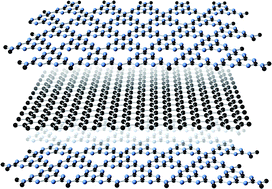
Energy Environ. Sci., 2011,4, 4517-4521
https://doi.org/10.1039/C1EE01400E
A visible light water-splitting cell with a photoanode formed by codeposition of a high-potential porphyrin and an iridium water-oxidation catalyst
A high-potential zinc porphyrin and an iridium water-oxidation catalyst are combined to prepare a photoanode for a visible light water-splitting cell.
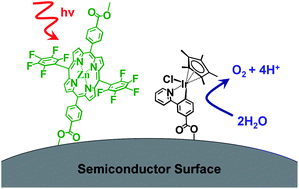
Energy Environ. Sci., 2011,4, 2389-2392
https://doi.org/10.1039/C1EE01037A
Photo-assisted water oxidation with cobalt-based catalyst formed from thin-film cobalt metal on silicon photoanodes
Integrating chemical electrocatalysts for water splitting and photoanode materials is longstanding challenge to achieve light-assisted water oxidation and is an attractive paradigm for the generation of solar fuels. In this work we use a silicon photoanode substrate for processing cobalt metal thin films to form a cobalt-based water oxidation catalyst (Co–Pi). The Co–Pi loaded electrodes show 100× improvement over the bare silicon photoanodes.
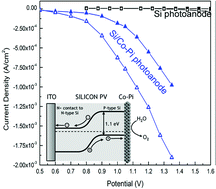
Energy Environ. Sci., 2011,4, 2058-2061
https://doi.org/10.1039/C1EE01209F
High-performance Si microwire photovoltaics
Cu-catalyzed vapor–liquid–solid growth and surface passivation techniques produce crystalline Si microwires of sufficient material quality for high-performance photovoltaics with >17% efficiency potential.
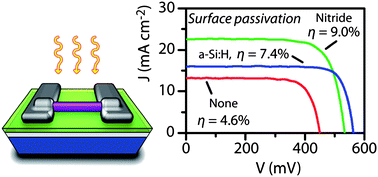
Energy Environ. Sci., 2011,4, 866-871
https://doi.org/10.1039/C0EE00549E
The OE-A OPV demonstrator anno domini 2011
Roll-to-roll manufacture of OPV and integration into credit card sized flashlights for the OE-A demonstrate that large numbers (10 000 units) can be prepared in high technical yield.
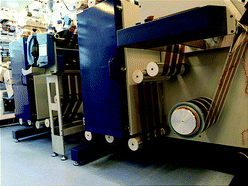
Energy Environ. Sci., 2011,4, 4116-4123
https://doi.org/10.1039/C1EE01891D
A novel high-performance photovoltaic–thermoelectric hybrid device
A novel photovoltaic–thermoelectric hybrid device based on a dye-sensitized solar cell is presented with an overall efficiency of 13.8%.
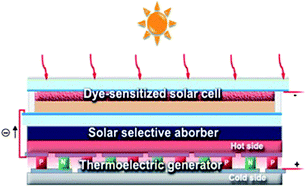
Energy Environ. Sci., 2011,4, 3676-3679
https://doi.org/10.1039/C1EE01646F
The mechanism behind the beneficial effect of light soaking on injection efficiency and photocurrent in dye sensitized solar cells
Successful recipes can rest unexplained for decades while novelty rules the roost. We redress one such anomaly in photoelectrochemical photovoltaics.
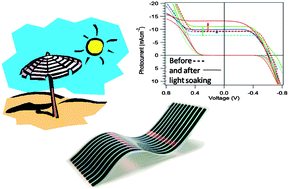
Energy Environ. Sci., 2011,4, 3494-3501
https://doi.org/10.1039/C1EE01443A
Roles of thermally-induced vertical phase segregation and crystallization on the photovoltaic performance of bulk heterojunction inverted polymer solar cells
Vertical phase segregation has been found to play a minor role compared to nanoscale crystallinity on the performance of inverted polymeric solar cells.
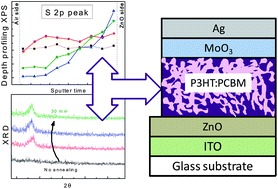
Energy Environ. Sci., 2011,4, 3456-3460
https://doi.org/10.1039/C1EE01316E
Planar dye -sensitized photovoltaics through cavity mode enhancement
Resonant cavity coupling enables unity roughness DSSCs to reach 17% IPCE and 1.0 V under polarized monochromatic, prism-coupled illumination.
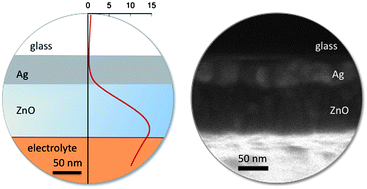
Energy Environ. Sci., 2011,4, 2980-2985
https://doi.org/10.1039/C1EE01578H
Bacteriorhodopsin/TiO2 nanotube arrays hybrid system for enhanced photoelectrochemical water splitting
Water splitting using bacteriorhodopsin/TiO2 nanotubes hybrid electrode
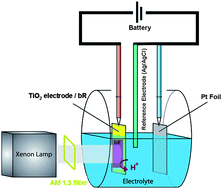
Energy Environ. Sci., 2011,4, 2909-2914
https://doi.org/10.1039/C1EE01447A
Mesoscopic titania solar cells with the tris(1,10-phenanthroline)cobalt redox shuttle: uniped versus biped organic dyes
We scrutinize the impact of the anchoring group number of organic dyes on the optoelectric features of dye-sensitized solar cells.
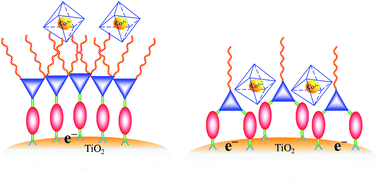
Energy Environ. Sci., 2011,4, 3021-3029
https://doi.org/10.1039/C1EE01633D
Photo-assisted electrodeposition of cobalt–phosphate (Co–Pi) catalyst on hematite photoanodes for solar water oxidation
Photo-assisted electrodeposition of Co–Pi electrocatalyst onto mesostructured α-Fe2O3 photoanodes improves solar water oxidation.
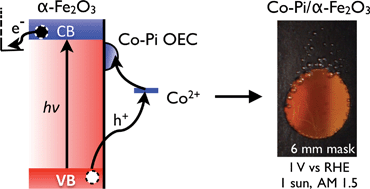
Energy Environ. Sci., 2011,4, 1759-1764
https://doi.org/10.1039/C1EE01034D
Highly active cobalt phosphate and borate based oxygen evolving catalysts operating in neutral and natural waters
A cobalt catalyst operating at high current and in natural waters is promising for renewable energy storage technologies.
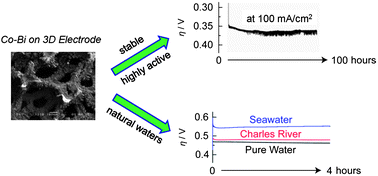
Energy Environ. Sci., 2011,4, 499-504
https://doi.org/10.1039/C0EE00518E
About this collection
We would like to share with you some great new articles published on solar energy in Energy & Environmental Science in 2011. You can read all the articles in this collection for free for a limited period.
With an Impact Factor of 9.45 and ranked #1 in its field, Energy & Environmental Science is the ideal place to publish your solar research.